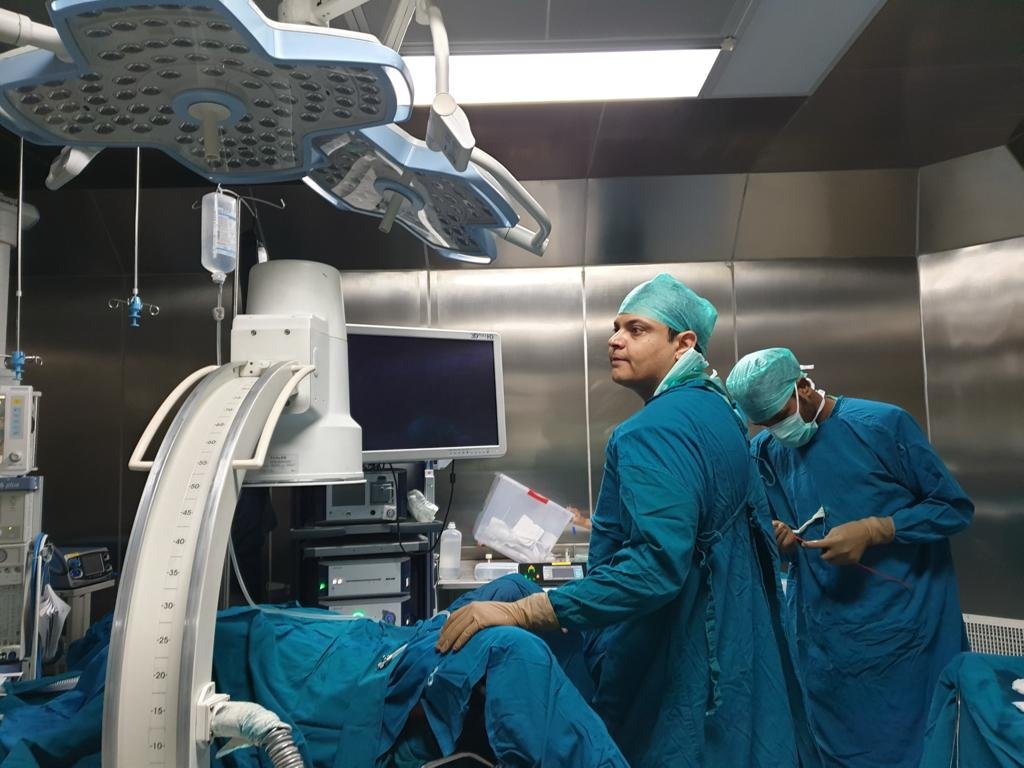Bladder Cancer
We heal with the latest innovations in Urology.
Overview
Bladder cancer is a disease in which malignant (cancer) cells form in the tissues of the bladder. The bladder is a hollow organ in the lower abdomen that stores urine before it is excreted from the body. Bladder cancer typically starts in the cells that line the inside of the bladder, known as urothelial cells. This type of cancer is the most common in the urinary system and can vary in how fast it grows and spreads.
Types of Endoscopic Procedures
Symptoms
Bladder cancer symptoms can often be similar to those of other non-cancerous conditions. Common signs and symptoms include:
Blood in the urine, which may make the urine look bright red or cola-colored. Sometimes, the blood is not visible and is detected only by a urine test.
Discomfort or burning sensation during urination.
Needing to urinate more often than usual.
Feeling a strong, immediate need to urinate, even if the bladder is not full.
Discomfort or pain in the pelvic area.
Pain on one side of the lower back, often where the kidneys are located.
Causes
Bladder cancer is caused by changes (mutations) in the DNA of the cells in the bladder. These mutations can cause the cells to grow uncontrollably and form a tumor. Several factors can increase the risk of developing bladder cancer, including:
Tobacco smoke contains harmful chemicals that can accumulate in the urine and damage the lining of the bladder.
Certain chemicals used in manufacturing, such as those in the dye, rubber, leather, and textile industries, can increase the risk.
Persistent bladder infections and irritations, including those caused by long-term catheter use, can contribute to the risk.
Previous radiation treatment in the pelvic area can increase the risk of bladder cancer.
A family history of bladder cancer may indicate a genetic predisposition to the disease.
Exposure to arsenic in drinking water, more common in certain regions, can increase the risk.
Diagnosis
Diagnosing bladder cancer typically involves a combination of tests and procedures:
Tests such as urinalysis or urine cytology can detect abnormal cells or blood in the urine.
A procedure where a urologist inserts a thin tube with a camera (cystoscope) through the urethra to examine the bladder. This allows direct visualization of the bladder lining and any suspicious areas.
During cystoscopy, the doctor may take a small sample of tissue (biopsy) for analysis to determine if cancer cells are present.
Imaging techniques such as CT (computed tomography) scans, MRI (magnetic resonance imaging), and ultrasound can help visualize the bladder and surrounding structures to assess the extent of the cancer.
An X-ray test that uses a contrast dye to highlight the urinary tract, helping to identify abnormalities.
Treatment
Treatment for bladder cancer depends on the stage and grade of the cancer, as well as the patient’s overall health. Common treatment options include:
- Transurethral Resection (TURBT): A procedure to remove early-stage or superficial bladder tumors using a cystoscope.
- Cystectomy: Surgical removal of part (partial cystectomy) or all (radical cystectomy) of the bladder. Radical cystectomy may also involve removing surrounding lymph nodes and organs.
- Intravesical Chemotherapy: Chemotherapy drugs are delivered directly into the bladder through a catheter, often used for early-stage cancer.
- Systemic Chemotherapy: Chemotherapy drugs are administered orally or intravenously, targeting cancer cells throughout the body, typically used for advanced cancer.
High-energy rays are used to kill cancer cells and shrink tumors. This can be used alone or in combination with other treatments.
Treatments that help the body’s immune system fight cancer, such as Bacillus Calmette-Guerin (BCG) therapy, which is often used for non-invasive bladder cancer.
Drugs that target specific molecules involved in cancer cell growth and spread, used in some advanced bladder cancer cases.
